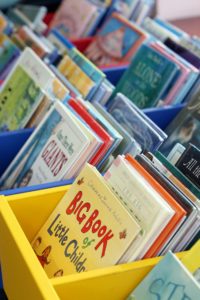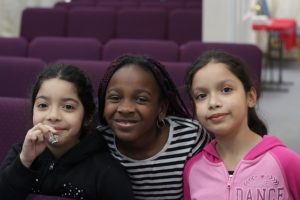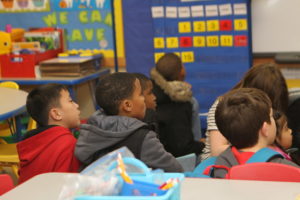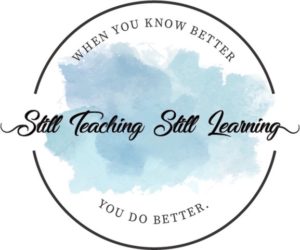
I’m sure you’ve heard the phrase by now – we need to “Maslow before Bloom.” What does it mean and how do we do that?
The phrase itself refers to Abraham Maslow’s Hierarchy of Needs. In Maslow’s theory, there are five levels of needs.
The most basic is physiological needs (air, water, food, shelter, sleep, clothing). The next level is safety needs (personal security, resources, health, property). The third level is love and belonging (friendship, family, sense of connection).



Next come esteem needs (respect, self-esteem, status, recognition, freedom). And the highest level is self-actualization, or the desire to be the best one can be. You can read more about the theory and levels of needs HERE.
(And if you need a quick refresher on Bloom’s taxonomy, here you go!)



Even without looking at the pyramid, teachers know that students cannot learn well if they’re hungry or sleepy or if their clothing is not appropriate for the weather. Teachers also know that students find it difficult to learn when they don’t feel safe, when they feel sick, or if they don’t have the appropriate resources (pencils, for instance).
But that third level is especially interesting. The need for love and belonging is something that many of us feel is very important but at odds with the focus on how much instructional time should be spent on math or reading, etc. Especially in this year of “re-entry” to our school buildings, we are noticing that many students still feel somewhat disconnected and are often having to be taught basic social skills, how to show respect for others, and what types of behaviors are appropriate (or not) in school.



What are some good ways to help students feel more connected and emotionally safe in our classrooms, without adding even more to our overflowing plates?
The good news is that many strategies that help students are strategies that also help teachers enjoy their students more. Most of them can be fit into small moments of the day. Best of all, you don’t have to do all of them. Just pick one or two and see how they work for you.



1 – Greet your students at the door in the morning (or when you change classes). This is the easiest way to check in with each student briefly and get a “temperature check” on how students are doing. It doesn’t solve everything, but it does help to start the day on a positive note with every student feeling “seen.”
2 – Hold class meetings or morning circles. I wrote a post about getting these started and they continue to be one of the most effective strategies I’ve ever used. They don’t have to be lengthy. Just a brief gathering every morning to check in with every student is very effective.



3 – Try using dialogue journals with your students. While this is a more time-consuming strategy, many teachers feel that the time invested is well worth it. Here is how I implemented these journals in my classroom.
4 – Read aloud to your students. Here is a list of some of my favorite picture books and some of my favorite chapter books.



5 – Speaking of read-aloud, #classroombookaday is a great tradition to start in your classroom. Here’s more information about how to implement it.
6 – Revisit some activities that are often used at the beginning of the year. You can pull these out whenever you and your class need a change of routine or a little boost. I’ve got lots of ideas HERE and HERE.



7 – January is a typical time to “reset” your classroom. After winter break (or any break), everyone tends to need a little reminder about procedures and routines. Regardless of the time of year – you can reset any time! Here are some tips in my January reset posts HERE and HERE.
8 – Social-emotional learning (SEL) became a big buzzword (and a long-overdue focus) during distance learning. Here is a post I wrote about some of my favorite SEL strategies.



9 – Offer frequent breaks throughout the day. Here’s a link to a great article on Edutopia
with research explaining how and why frequent breaks benefit students. “Breaks” doesn’t have to mean recess. Exercise or movement breaks in the classroom, a quick fresh air break outside (bonus for running or jumping), dance breaks, and yoga stretches all count. Other breaks might include opportunities to do some kind of art (even playing with play-dough) or mindfulness/deep breathing activities.
10 – Use Google forms as a way to check in with your students. I used these a lot during distance learning (here is a sample of one from very early in the pandemic). But they are great for using once a week or so in your classroom. Similar to dialogue journals, they are a private way for students to communicate with you and tell you whatever they want you to know.



Attending to our students’ physical and emotional needs is just as important as the content we teach them. Yes, it’s a big demand on our time and energy, but the payoff is huge when we see our students feeling happy, connected, and ready to learn.
What strategies work for you?
